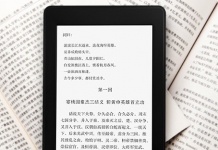 Readers in today’s ephemeral high-churn throwaway society might like to pause and reflect on a story just revealed by the academic journal Chinese Cultural Relics, and relayed via LiveScience: A Chinese nobleman’s tomb dating from the Liao Dynasty, some 1000 years ago, excavated near Datong City in northern Shanxi province, has revealed, along with sculptures and other tomb furniture, decorative murals including a poem.
Readers in today’s ephemeral high-churn throwaway society might like to pause and reflect on a story just revealed by the academic journal Chinese Cultural Relics, and relayed via LiveScience: A Chinese nobleman’s tomb dating from the Liao Dynasty, some 1000 years ago, excavated near Datong City in northern Shanxi province, has revealed, along with sculptures and other tomb furniture, decorative murals including a poem.
This preservation of a poem will come as no surprise to anyone … ahem … versed in the traditions of Chinese poetry. Although the Liao Dynasty derived from a nomadic Khitan khanate, many of its citizens and subjects were ethnic Han Chinese, who perpetuated the native veneration of poetry, especially among the elite. Classical Chinese poetry was intimately involved with the business of government, with the Shijing (Classic of Poetry) anthology of verse from the pre-imperial period a required text for Confucian scholars sitting the imperial examinations for government service under later dynasties. And contemporaries of the deceased were developing the wonders of Song poetry further to the south at the time of his death (as in the scroll painting in this article). The anonymous gentleman of the Datong tomb is representative of the tradition.
That said, the story also highlights some more contemporary problems with the perpetuation of learning. Chinese Cultural Relics, a translation “”of the renowned Chinese archaeology journal Wen wu (Cultural Relics)” from East View Press, retails at $525 for its online edition. At these kind of rates, without the benefit of scholarly open access, modern scholars of Chinese poetry are likely to be priced out of the market.































